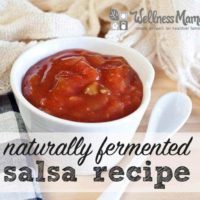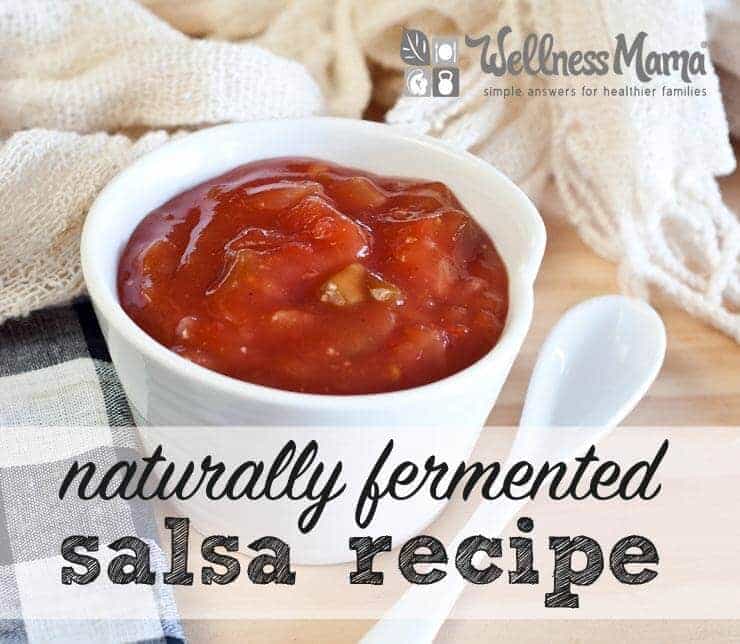Now that we are just on the verge of tomato and pepper season, I wanted to share this recipe for cultured salsa. Fermenting salsa is an easy way to make it last longer without canning and it adds a probiotic boost.
We eat and drink a lot of fermented foods, from water kefir soda to sauerkraut, and fermented salsa is definitely one of the easiest ways to get the benefits of fermented foods in your diet.
If done properly, fermented salsa will last months in the fridge or in cold storage and get more probiotics with age. Plus it tastes delicious with some homemade tortilla chips!

Fermented Salsa Recipe
Servings
Ingredients
- 2½-3 lbs tomatoes
- 2 peppers (such as bell, cayenne, or habañero peppers)
- 1-2 onions
- 4 cloves garlic
- ½ cup fresh cilantro
- 1 lemon (juiced)
- 1 lime (juiced)
- 2 TBSP salt
- spices to taste (such as oregano, black pepper, cumin, chili powder, and cayenne pepper)
- ½ cup whey
Instructions
- Chop tomatoes, peppers, onion, garlic, and cilantro and place in a large bowl.
- Add the juice of the lemon and lime.
- Add salt and spices to taste.
- Add whey and stir well to incorporate.
- Pour into quart or half gallon size mason jars and cap tightly.
- Leave on the counter for approximately 2 days.
- Transfer to the refrigerator or cold storage (oh, I wish I had a cellar or basement!).
Nutrition
Notes
A Fast and Easy Tip
If you don’t have the time or ingredients to make your own salsa, you can get the benefits of fermented salsa by fermenting store bought salsa as well. If possible, use the fresh made salsas in the refrigerated section, but you can ferment canned versions also.
Is your kitchen a small scale chemistry lab like mine? Do jars of foods in various stages of fermentation clutter your counter as they do mine? What’s your favorite?


Leave a Reply